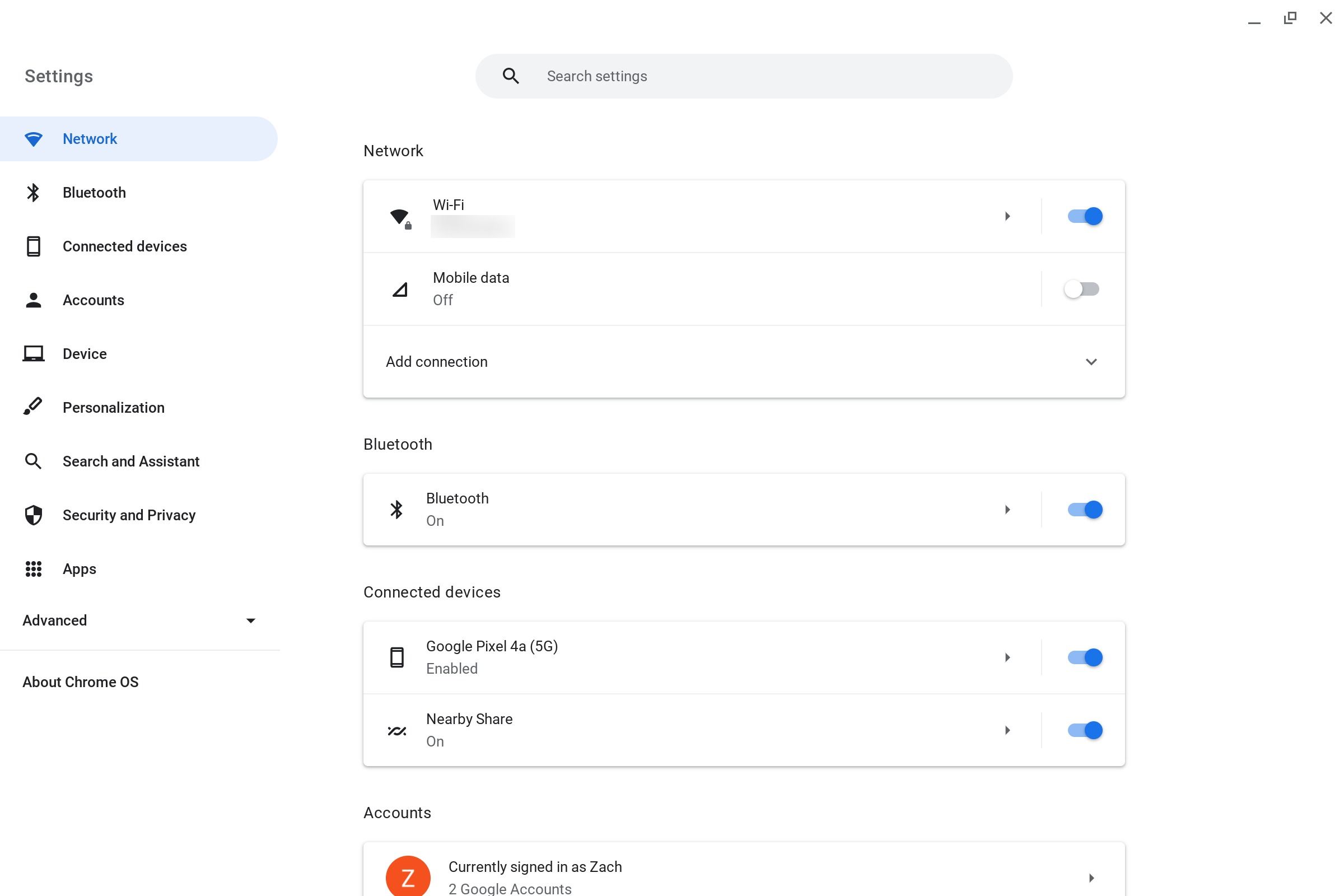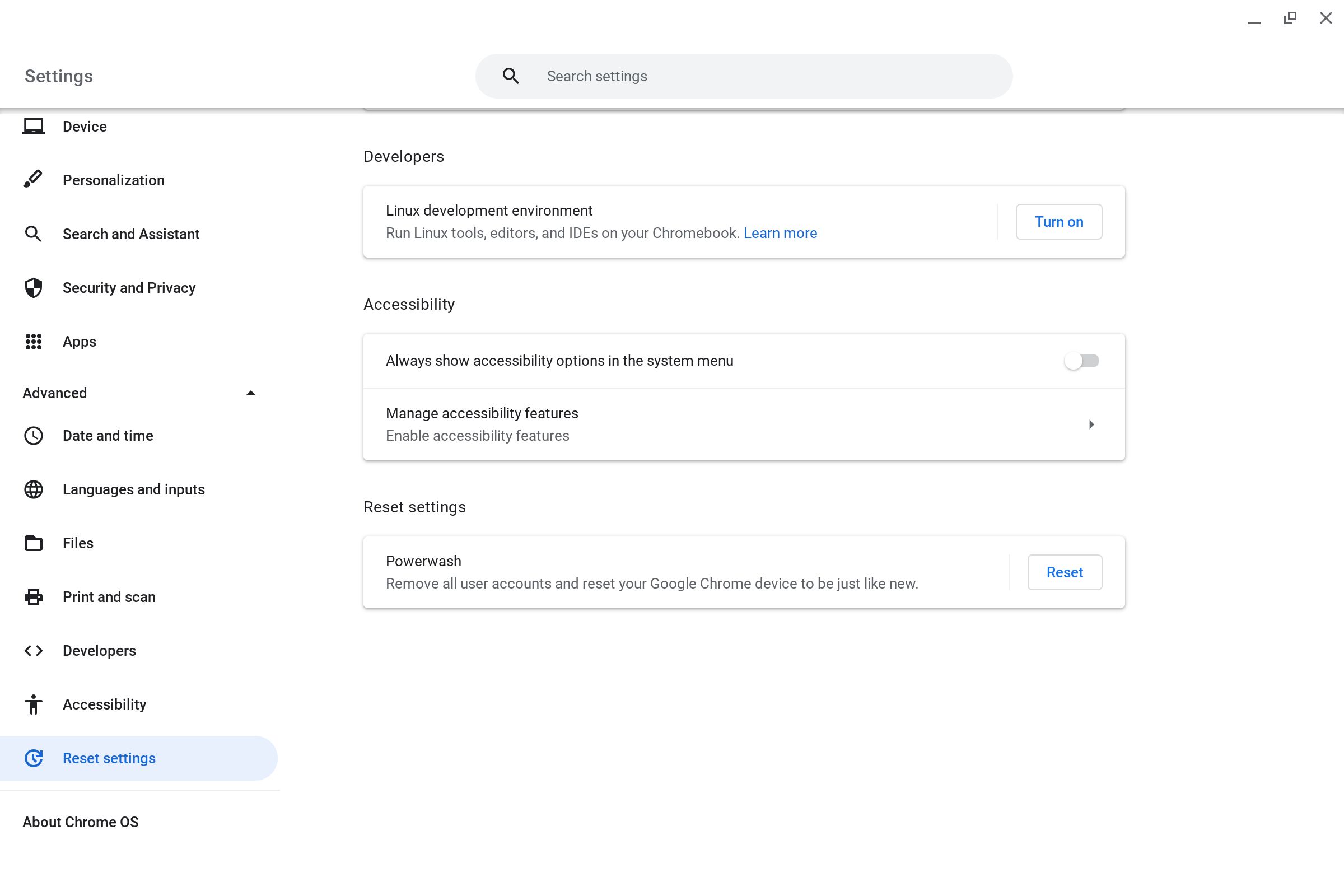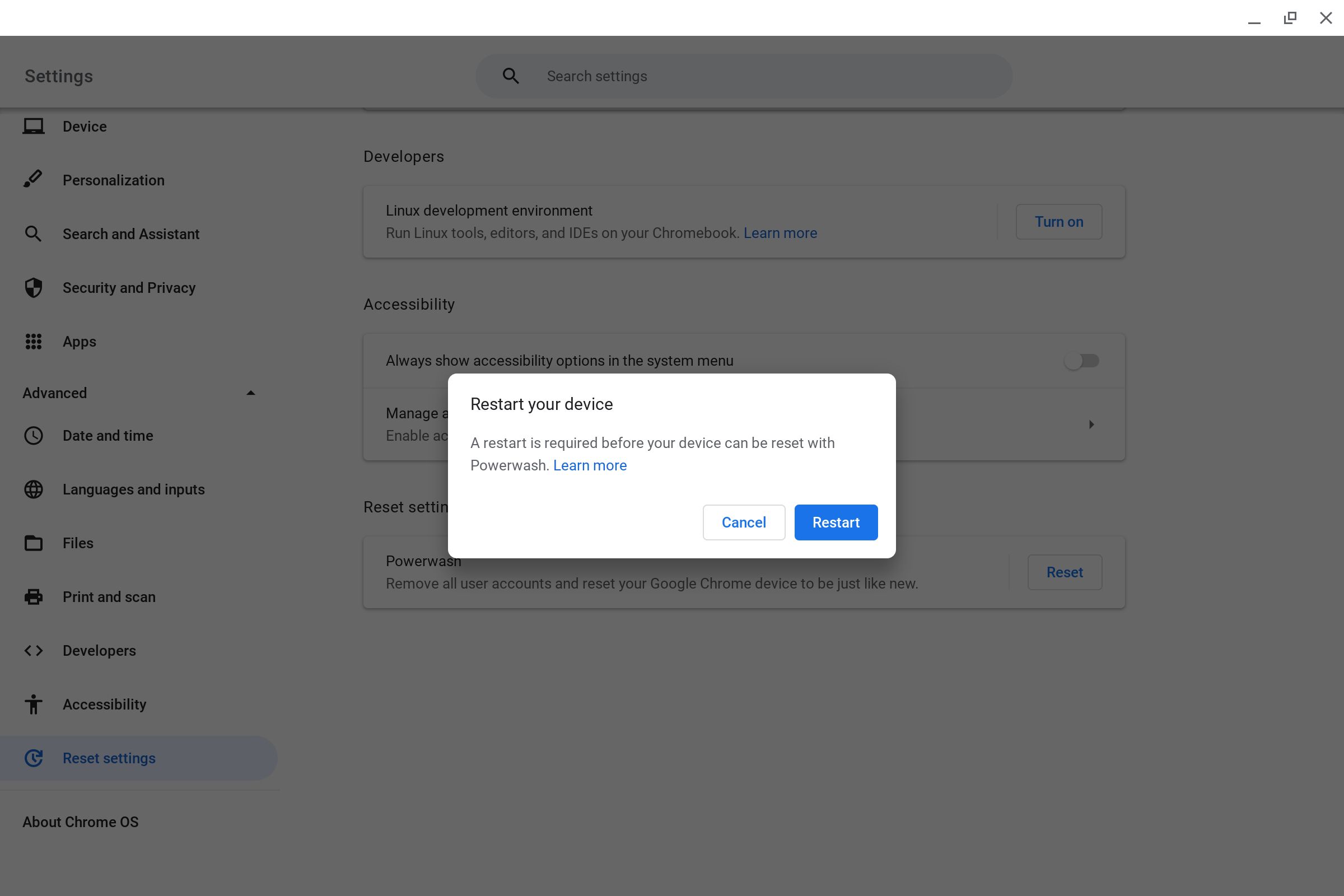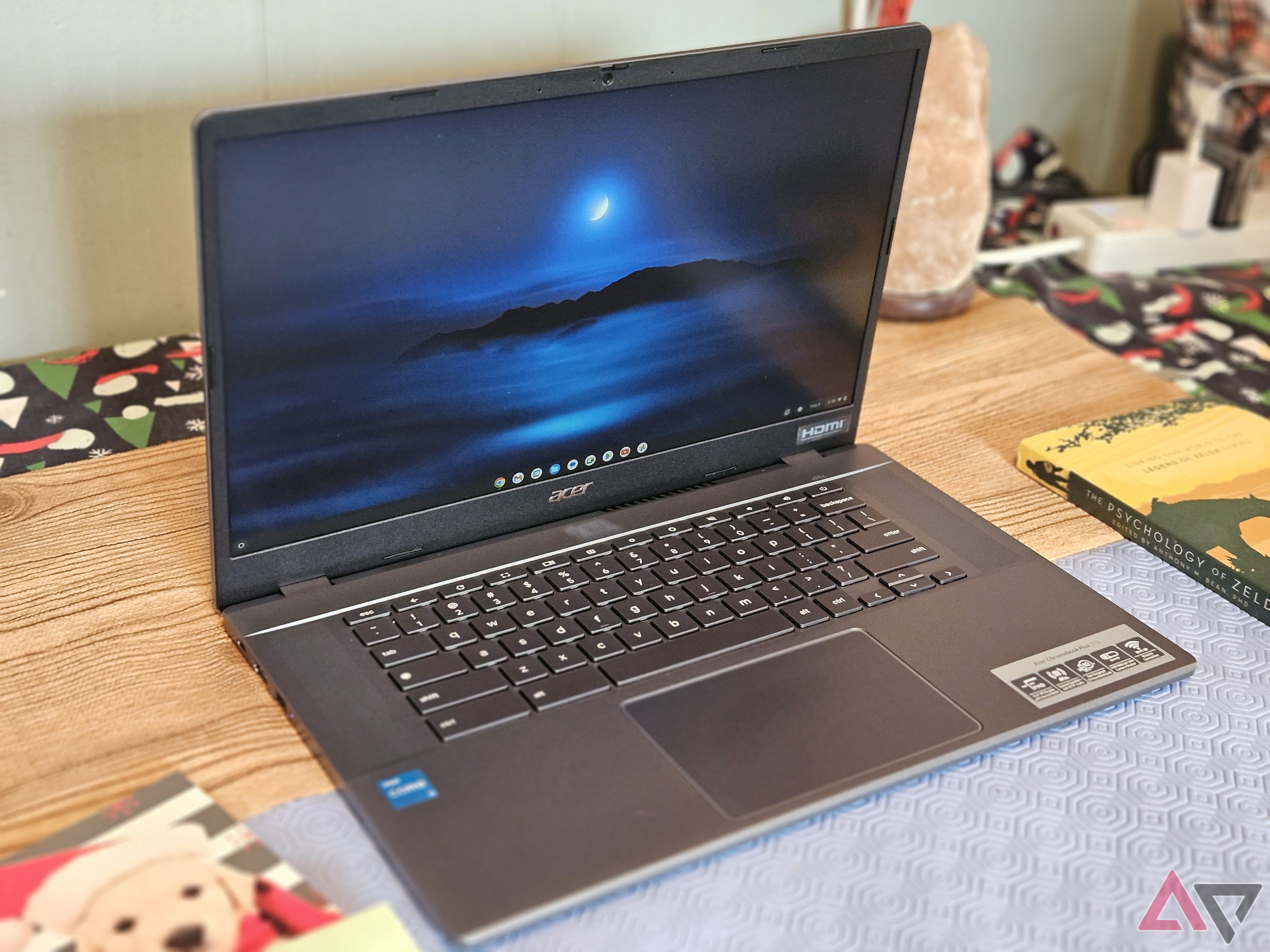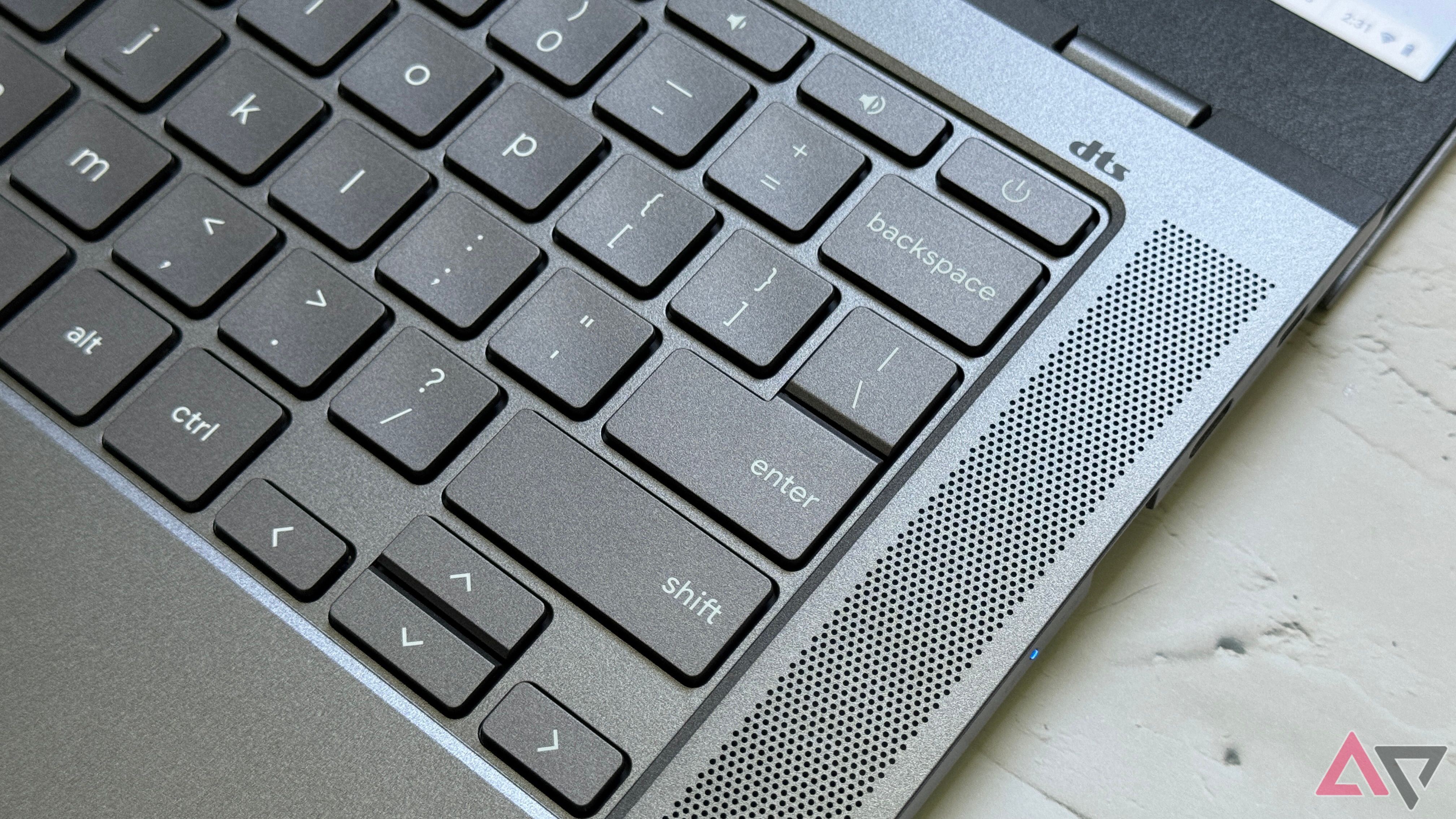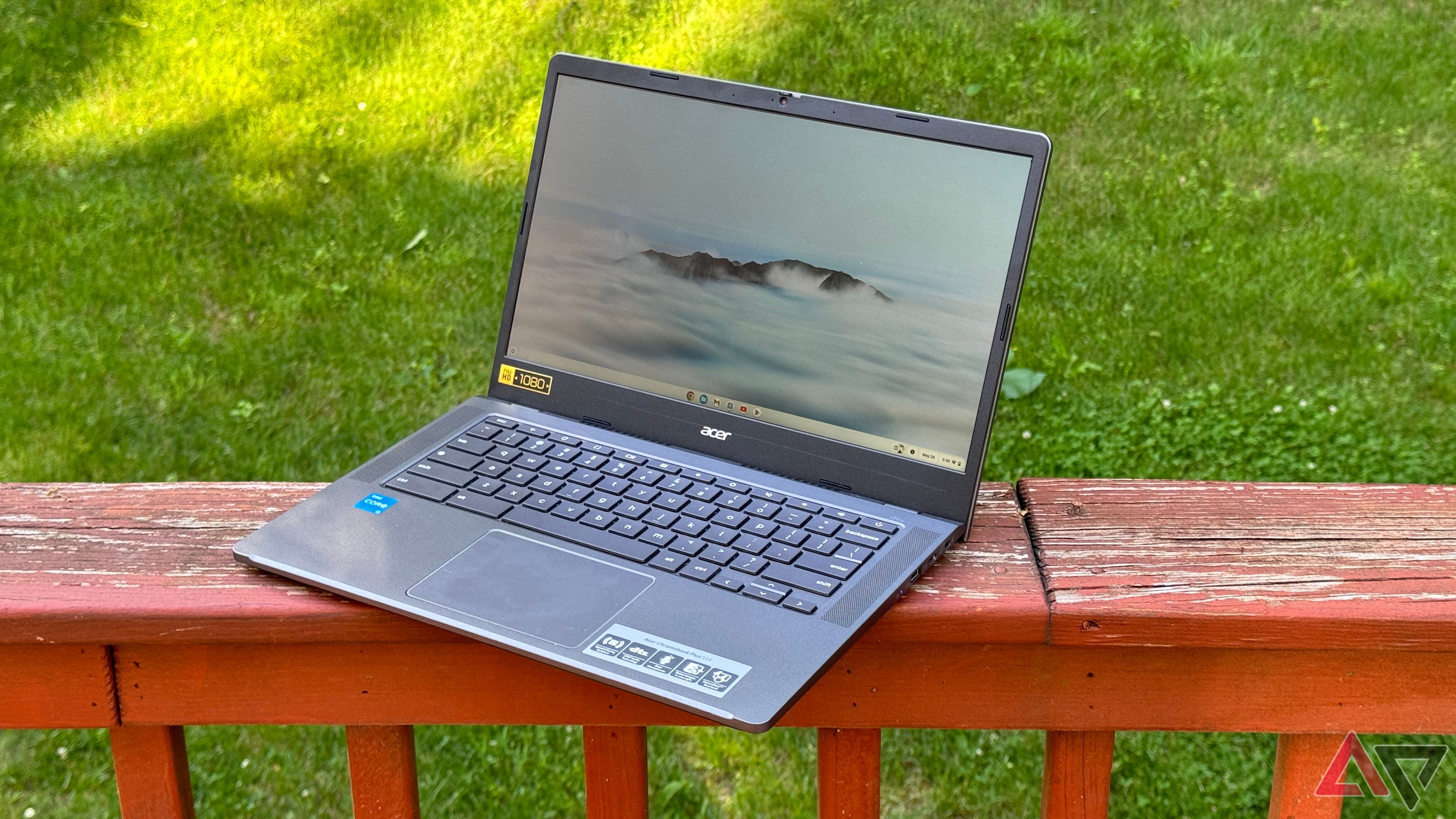When it comes to browsing the web and completing basic tasks, a good Chromebook can go toe-to-toe with Windows and Mac devices and have comparable hardware, often for less money. Even though Chromebooks are robust, they may run into issues that require a factory reset. Also, if you get a used Chromebook, you may need to erase the previous owner’s data. There are a couple of methods to reset, or Powerwash, your Chromebook, no matter who the manufacturer is.
We use
Powerwash
and
factory reset
interchangeably throughout this guide. Google also uses both terms, but they’re not exact synonyms. Powerwash refers to the tool that removes data from a ChromeOS device. A factory reset removes data from a ChromeOS device using the Powerwash tool.
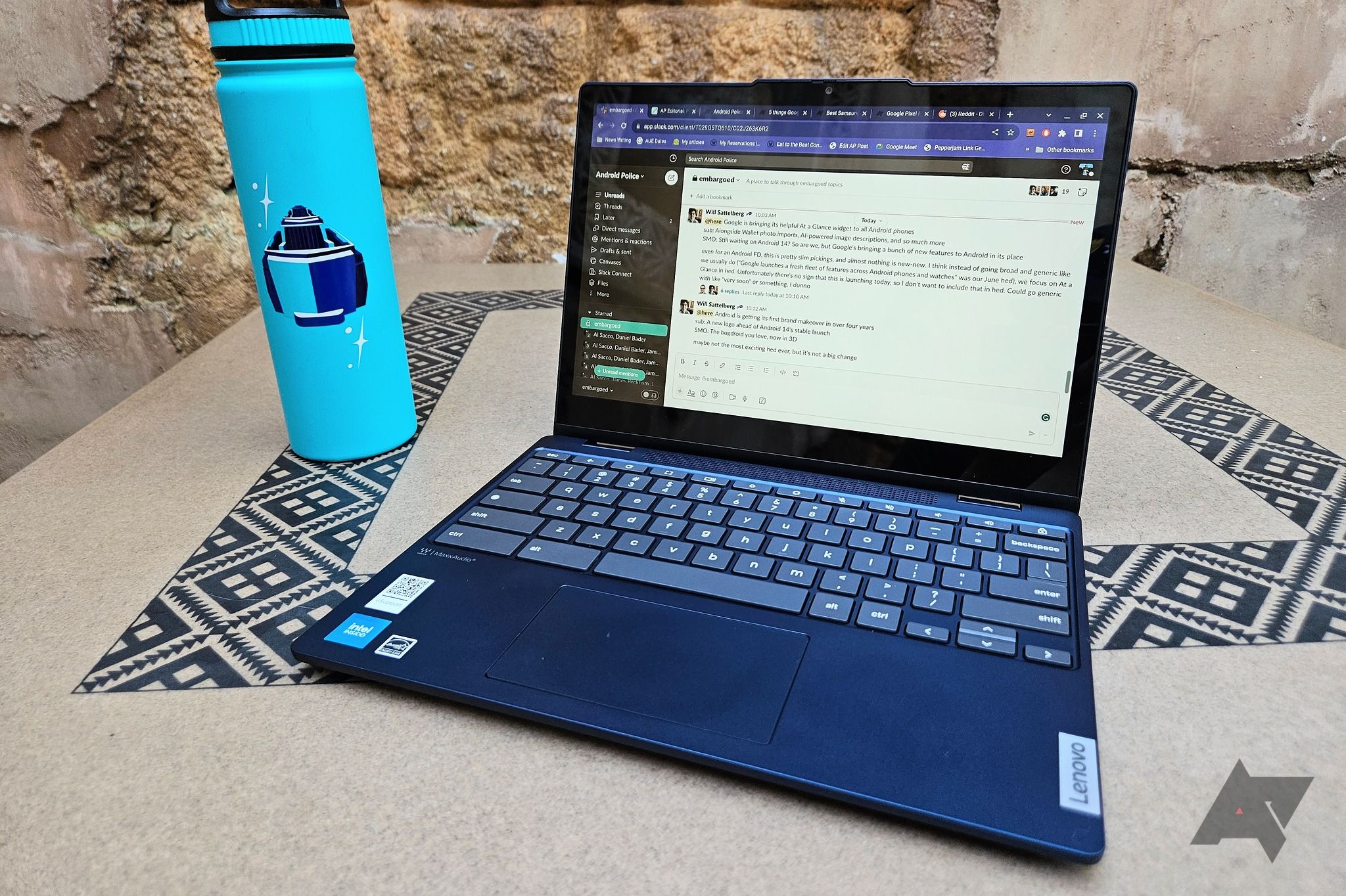
Related
The 14 most common Chromebook errors and how to fix them
The most common issues you may run into on your Chromebook and how to make them go away
Things to know before you reset your Chromebook to factory settings
Here’s what you need to know before resetting your Chromebook:
- Resetting your Chromebook removes all local files and data. Before resetting your Chromebook, back up the files you need to Google Drive or another cloud storage service. That way, you won’t lose them. These files cannot be recovered after the reset.
- All accounts on your Chromebook are removed when the Chromebook is reset. Back up the files from all accounts and save login information for those accounts in a password manager.
- Most Chromebook data automatically syncs to the Google Drive of the associated Google account. However, Android app data and Linux apps are not saved. Manually back up your Linux apps and Android app data before you begin the reset process. Move the data from your local save folders to Google Drive or another cloud storage service to do this.
- Only try a hard reset after the other tricks failed. It wipes all the device data, and setting up everything from scratch can be time-consuming.
Reset a Chromebook in the following situations
You’ll perform a Powerwash on your Chromebook in these situations:
- The Chromebook displays the message Reset this Chrome device.
- The Chromebook experiences frequent glitches and errors with account profiles and other device settings.
- Basic fixes such as the built-in troubleshooter and reboots fail to fix the issue.
- The Chromebook will be sold to someone else.
How to factory reset a Chromebook when you’re logged in
There are a couple of ways to wipe a Chromebook completely. If you can log in to your device when you reset it, here’s what you’ll do:
- Open the Settings menu through the launcher or by tapping the Settings gear in quick settings in the lower-right corner of the screen.
- On the left, tap Advanced.
- Select the Reset settings option.
- Click the Reset button.
- Click Restart in the dialog box that pops up.
When the device restarts, the reset is complete. Follow the onscreen instructions to sign in to your Google account and a Wi-Fi network and start the Chromebook setup process. The account you used to sign in initially becomes the owner account for the Chromebook.
How to factory reset a Chromebook from the login screen
If the previous owner did not reset the Chromebook or if you can’t log in, reset your device from the login screen. You can also sign out to use this keyboard shortcut Powerwash method.
- At the login screen, simultaneously press Ctrl, Shift, Alt, and R.
- Press the Restart button in the dialog box that appears. You can also hold down the power button to shut off your Chromebook.
- When your Chromebook reboots, press the Powerwash button in the new dialog box that appears.
- Confirm that you want to Powerwash your device by tapping the Continue button.
After completing this process, your device resets and you are prompted to log in with a Google account.
How to hard reset a buggy Chromebook
If these troubleshooting steps did not fix the issues with your Chromebook hardware, it might be time for a hard reset. Unlike the other options, this does not reset all your data, but it may delete some files in your download folder. Back up this data to Google Drive or an external storage device before you hard reset your Chromebook.
This trick is handy if your device doesn’t boot up or freezes. It resets both hardware and software configurations to the out-of-box settings.
- Power off your Chromebook.
- Simultaneously press and hold the Power and Refresh buttons to enter recovery mode. If your Chromebook doesn’t boot up, connect it to a power source and try the key combination again. If it still doesn’t show a screen, press the Esc key along with the other two keys.
- After the Chromebook reboots, release the Refresh button.
If you have a tablet running the Chrome OS operating system, press and hold the Power and Volume Up buttons for about 10 seconds and then release them. Any issues with your Chromebook hardware should be resolved when you log back in.
If you have an old Chromebook with a dedicated reset key, use it to hard reset the device.
How to reset a school Chromebook
Did your school assign a Chromebook to you? If it’s buggy and full of glitches, you may want to reset it to factory settings. You can’t reset the device as usual. It’s enrolled under an administrator, and you need to get help from the administrator to get the job done. You can ask the IT admin to unroll your device from school restrictions, unlock all the privileges, and gain full access to your Chromebook.
If all else fails, recover your Chromebook
If the steps above do not work, it may be time to recover your Chromebook. This process deletes all the content on your device’s hard drive, including the operating system. To recover your device, you need another computer with Google Chrome installed and an external storage device with at least 8GB of storage. Your Chromebook also needs to be connected to power throughout the process.
Check your Chromebook’s diagnostics for minor issues
If your Chromebook has major issues, one of these methods should factory reset it even if you can’t log in. If you have basic issues with your Chromebook, such as being slow or laggy, the Chrome OS Diagnostics app can help you diagnose the issue.
Source link

